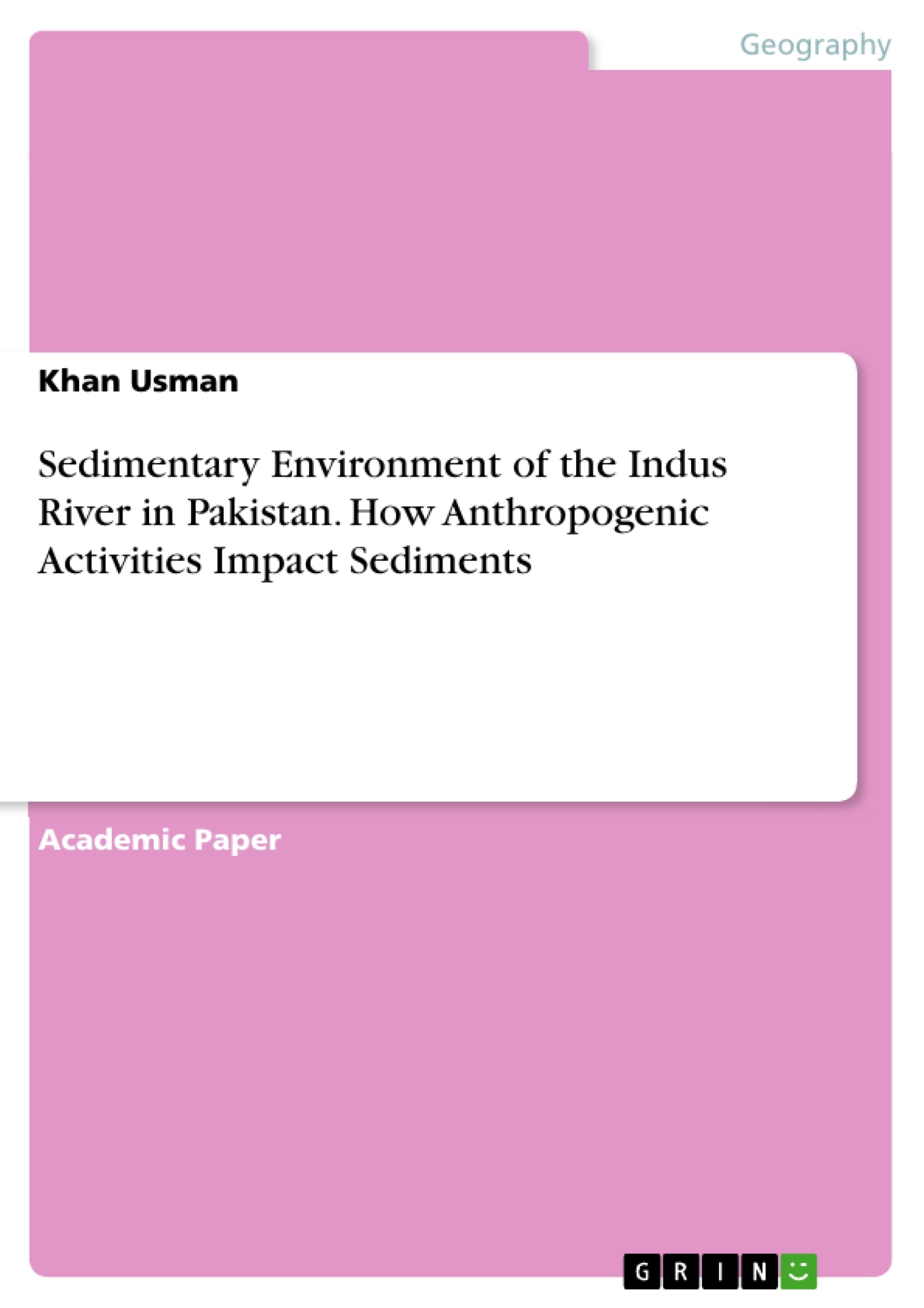This paper deals with the sedimentary environment of the Indus River in Pakistan and the question of how anthropogenic activities change its sediments.
Indus River is the longest river in the Asian territory, originated from Tibet Mountain northwest of Pakistan. Routed from the northern part of Gilgit and flowing to word plan area passed through different provinces and flow with sedimentary flux connected with many small and large tributaries tectonically the birth of the rive due to collision of Indian and Eurasian plate that are called Indus suture Plains zone (ISPZ). The main geology composed of igneous and metamorphic rock. The river passed in the various climatic zone with different regions mostly climate is subtropics arid and sub arid to subequatorial. The northern area mostly coved by monsoon system variation of seasonality takes place in the month of May to Oct high flow with increase sedimentary flux special in monsoon time. Anthropogenic activities locally and widely in terms of construction of dams water canals for irrigation purposes, mining exploration, and industries and factories all flux flow in different tributaries impacted on physical and chemical behaviors of the sediments. The primary impact of anthropogenic processes is the reworking of weathered soil smectite which is an indicator of chemical weathering and which increases in the offshore record after around 5000 years ago. This material indicates greater transport of stronger chemically weathered material and some of this may be caused by the erosion of old soils broken up by agriculture, although we also see evidence for the incision of the big rivers into the floodplain which is also driving reworking of this type of material so the signal may be a combination of the two. The dramatic change in shape and size of the sediments by colliding each other during the high charge river.
Table of Contents
- Introduction
- Background
- Geology/Tectonic Setting
- Hydrology and Seasonal variation
- The Indus Fan
- Upper Indus Basin
- Environmental conditions
- Sedimentation environment of the Indus River
- Traveling path of sediments
- Anthropogenic activity across the Indus River
- Known geomorphic activities involving humans include
- KEY DRIVERS
- Dam construction
- Land clearance and catchment disturbance
- Coal mining influence central Indus basin
- Chemical and Physical changes in sediments in the Indus River
- Conclusion
- References
Objectives and Key Themes
This review paper aims to analyze the sedimentary environment and climatic zones of the Indus River and how anthropogenic activities have affected sedimentation. The paper explores the geological and tectonic history of the Indus River basin, emphasizing the role of plate tectonics in its formation. It also discusses the river's hydrology and seasonal variations, particularly the influence of monsoon rainfall and glacial meltwater.
- The impact of anthropogenic activities on the Indus River system, including dam construction, land clearance, and mining.
- The role of monsoon precipitation and glacial meltwater in the river's hydrology and sediment transport.
- The geological and tectonic history of the Indus River basin, including the collision of the Indian and Eurasian plates.
- The sedimentary environment of the Indus River, including the composition and transport of sediments.
- The influence of human activities on the physical and chemical properties of sediments in the Indus River.
Chapter Summaries
The introduction provides an overview of the Indus River, highlighting its importance in the Asian region and its significance in both ancient and modern civilizations. The chapter discusses the river's geological origin, its role in the Indus Valley civilization, and its connection to the collision of the Indian and Eurasian plates. The introduction also mentions the river's role in sediment transport and the formation of the Indus Fan, one of the world's largest deep-sea fans.
The background chapter focuses on the geology and tectonic setting of the Indus River basin. The chapter explores the collision of the Indian and Eurasian plates, the formation of the Himalayas, and the impact of tectonic activity on the Indus River system. It also discusses the erosion processes that have shaped the surrounding mountains and valleys.
The chapter on hydrology and seasonal variation examines the influence of monsoon rainfall and glacial meltwater on the Indus River's water flow and sediment transport. It discusses the seasonal fluctuations in water discharge and the role of the Terbela dam in regulating water flow.
The chapter on the Indus Fan describes the vast sediment deposit at the mouth of the Indus River, formed over millions of years. It explores the composition and distribution of sediments in the fan and its role as a key indicator of past climatic and tectonic changes.
Keywords
The main keywords and focus topics of the text are: Indus River, anthropogenic activity, climate zone, monsoon season, tectonic setting, sedimentation environment, sediment transport, Indus Fan, dam construction, land clearance, mining, erosion, and glacial meltwater. These keywords represent the central themes and concepts explored in the work, highlighting the interdisciplinary nature of the research on the Indus River.
- Quote paper
- Khan Usman (Author), 2021, Sedimentary Environment of the Indus River in Pakistan. How Anthropogenic Activities Impact Sediments, Munich, GRIN Verlag, https://www.grin.com/document/1041138



